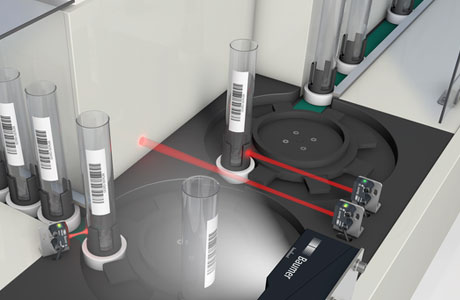Key Takeaway
Yes, a photoelectric sensor can measure distance, but only certain types. These sensors work by detecting changes in light intensity or time-of-flight. Diffuse reflective sensors can measure short distances, while more advanced sensors like laser photoelectric types offer higher accuracy for longer ranges.
However, there are limitations. Environmental factors such as dust or fog can affect measurement accuracy. For precision applications requiring long-range or extremely accurate measurements, alternative sensors like laser rangefinders or ultrasonic sensors may be more suitable.
The Functionality of Distance Measurement in Photoelectric Sensors
At the heart of any photoelectric sensor is light. These sensors use a beam of light, often infrared or laser, to detect an object and measure its distance. When the light hits an object, it either reflects back or gets absorbed, depending on the sensor’s type. For distance measurement, reflective sensors are typically used. They calculate the time it takes for the emitted light to bounce back after hitting an object, a principle known as time-of-flight (ToF). By measuring this time, the sensor can determine the distance with remarkable precision.
While this technology might sound complicated, it operates seamlessly in real-world applications, offering fast and accurate measurements.

Types of Photoelectric Sensors Designed for Distance Measurement
When measuring distance, different types of photoelectric sensors are designed for specific tasks, making them versatile for various industries. For example, diffuse sensors rely on the amount of reflected light to calculate the distance. While they are efficient in close-range applications, their performance can be affected by inconsistent surfaces, particularly those that are low-reflective or have irregular textures. This makes them more suitable for straightforward tasks where surface consistency is not a challenge.
Retro-reflective sensors, on the other hand, are equipped with a reflector that bounces the light beam back to the sensor. When an object interrupts this beam, the sensor calculates the distance based on how much light is reflected back. This type is ideal for applications where accuracy over moderate distances is required. Lastly, through-beam sensors work by placing the sensor and receiver opposite each other, and while mainly used for object detection, specialized models can measure distances with precision. Each sensor type is tailored to different needs, and choosing the right one is essential for achieving optimal performance in any system.
Limitations of Distance Measurement in Photoelectric Sensors
Despite their benefits, photoelectric sensors have their limitations, particularly when it comes to distance measurement. One of the main challenges lies in dealing with reflective surfaces. Highly polished or irregular surfaces can distort the light beam, leading to inconsistent distance readings and affecting overall system accuracy. This issue is more prevalent in environments where surface consistency cannot be guaranteed, such as in industries working with metal parts or glass.
Another challenge is environmental conditions. Dust, dirt, and even ambient light can interfere with sensor readings, making maintenance and proper installation crucial for uninterrupted operation. In harsh industrial settings, keeping sensors clean and protected can significantly improve their lifespan and performance. Moreover, photoelectric sensors are generally more suited for short to medium-range applications. For longer distances, their accuracy can diminish, prompting engineers to consider alternative technologies that better suit long-range requirements.
Applications That Require Distance-Measuring Photoelectric Sensors
Photoelectric sensors designed for distance measurement play a critical role in various industries. In manufacturing, they ensure that materials on conveyor belts or within automated assembly lines are properly positioned. Misalignments in these systems can cause significant delays or even damage to machinery, so sensors capable of providing precise distance measurements are indispensable in maintaining efficiency. This is particularly true in high-speed environments where even a slight miscalculation can have considerable consequences.
Warehousing and packaging industries also rely heavily on these sensors. Automated storage and retrieval systems, for instance, depend on sensors to ensure that goods are placed and retrieved accurately. Similarly, in packaging, distance-measuring photoelectric sensors verify that items are properly aligned before they proceed to sealing or further processing stages. Each of these applications emphasizes the need for high-precision sensors to avoid bottlenecks and ensure smooth operation in fast-paced environments.
Alternatives to Photoelectric Sensors for Precision Distance Measurement
Although photoelectric sensors offer a reliable solution for many applications, they are not always the best choice, especially when extreme precision or longer distance measurements are required. In such cases, ultrasonic sensors can be a more dependable alternative. These sensors use sound waves to measure distance, making them more effective in dusty or dirty environments where light-based sensors may struggle. Additionally, their ability to perform well in varying environmental conditions makes them a preferred choice in industries with high levels of particulate matter.
For applications requiring long-distance precision, laser distance sensors provide a higher degree of accuracy. Though they come with a higher price tag, their precision over extended ranges makes them a valuable investment for industries that need exact measurements. LIDAR, another advanced option, offers detailed distance mapping, particularly useful in autonomous vehicles and robotic systems. While more costly, LIDAR’s comprehensive mapping abilities make it ideal for complex applications. Understanding these alternatives helps engineers select the most suitable solution based on their specific operational needs.
Conclusion
Photoelectric sensors can measure distance efficiently in many industrial applications, from manufacturing to packaging. They are reliable, cost-effective, and versatile, especially in environments where contactless sensing is required. However, knowing their limitations, such as sensitivity to reflective surfaces and environmental interference, is vital. For precision and longer-range tasks, other technologies like laser or ultrasonic sensors might be better suited.
For engineers, mastering the use of photoelectric sensors means optimizing operations, reducing errors, and ensuring the smooth functioning of automated systems. It’s all about selecting the right tool for the right job, ensuring distance is measured with accuracy and reliability.
